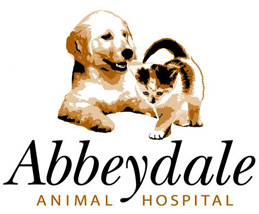Library
-
Dogs and cats have different nutrient requirements, which is why separate commercial pet foods are made for each species. Even pets of the same breed or body weight have unique calorie needs, so pet parents should feed them in separate bowls to avoid having any pets gain or lose weight. Diets designed for young growing puppies or kittens are different from adult dog or cat foods, so pups/kittens should be fed separately from adults until around the age of 11-12 months. Body condition scoring should be a part of regular monitoring to make sure each pet does not gain (or lose) weight.
-
Orphaned kittens need extra care to compensate for the absence of their mother, and this article outlines the basics, including how and what to feed, how to monitor their weight, how to help them eliminate, and how to keep them safe from infection.
-
Orphaned puppies need extra care to compensate for the absence of their mother, and this article outlines the basics, including how and what to feed, how to monitor their weight, how to help them eliminate, and how to keep them safe from infection.
-
Birds need a proper balance of carbohydrates, proteins, fat, vitamins, minerals, and water. Poor nutrition is a common reason for many health problems in birds. Pellets are the ideal diet for birds and should ideally represent approximately 75%-80% of the bird's diet.
-
Poor nutrition is a common reason for many health problems in birds. Cockatoos are vulnerable to vitamin A deficiency, high cholesterol, atherosclerosis, stroke, insufficient dietary calcium, egg-binding, and other nutrition-related problems. Pellets are the ideal diet for birds and should ideally represent approximately 75%-80% of the bird's diet.
-
Birds need a proper balance of carbohydrates, proteins, fat, vitamins, minerals, and water. Poor nutrition is a common reason for many health problems in birds. Conures are vulnerable to vitamin A deficiency, insufficient dietary calcium, egg-binding, and other nutrition-related problems. The recommended diet for conures is pelleted food formulated for birds and should ideally represent approximately 75%-80% of the bird's diet.
-
Birds need a proper balance of carbohydrates, proteins, fat, vitamins, minerals, and water. Poor nutrition is a common reason for many health problems in birds. Lovebirds are vulnerable to vitamin A deficiency, insufficient dietary calcium, egg-binding, and other nutrition-related problems. Seeds are highly palatable and preferred by birds, but nutritionally they are incomplete. The recommended diet for lovebirds is pelleted food formulated for birds and should ideally represent approximately 75%-80% of the bird's diet.
-
Macaws are vulnerable to nutrition-related problems such as high cholesterol, atherosclerosis, stroke, vitamin A deficiency, insufficient dietary calcium, egg-binding. Pellets are the ideal diet and should ideally represent approximately 75%-80% of the bird's diet.
-
Mynah birds eat a variety of foods and have relatively short digestive tracts when compared with other parrots. Mynah birds are naturally omnivorous, eating a variety of fruits, insects, larvae, amphibians, lizards, small snakes, eggs, baby birds, and baby rodents. Mynah birds are very sensitive to iron levels in their food, therefore, they should be offered a pelleted food that is low in iron.
-
All snakes are carnivores. Some eat warm-blooded prey (rodents, rabbits, birds), while others eat insects, amphibians, eggs, other reptiles, fish, earthworms, or slugs. Live prey should not be fed to snakes. Snakes can be offered thawed, previously frozen prey, or freshly killed prey. Smaller or younger snakes usually eat twice each week, while larger, more mature snakes typically eat once every week or two.

